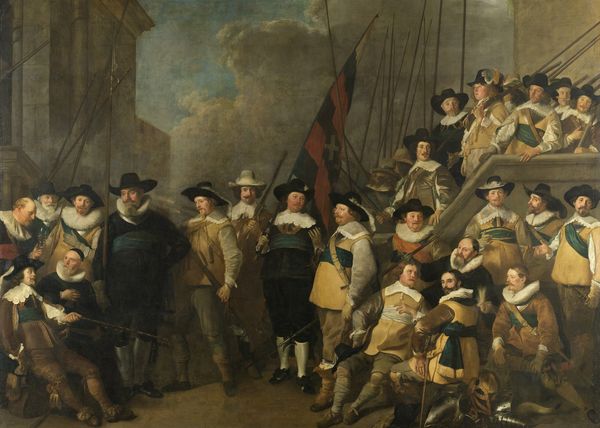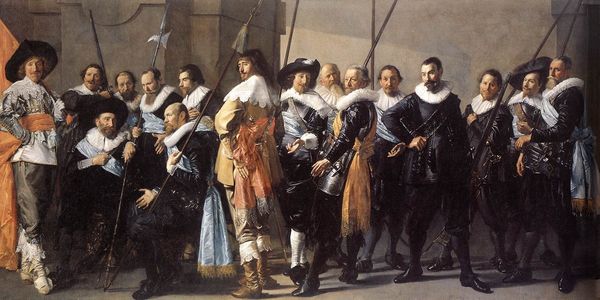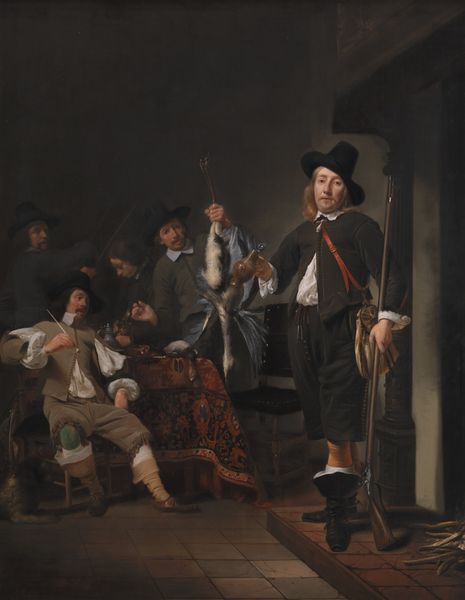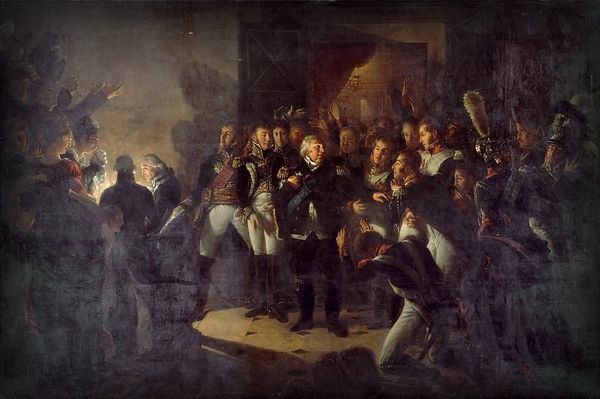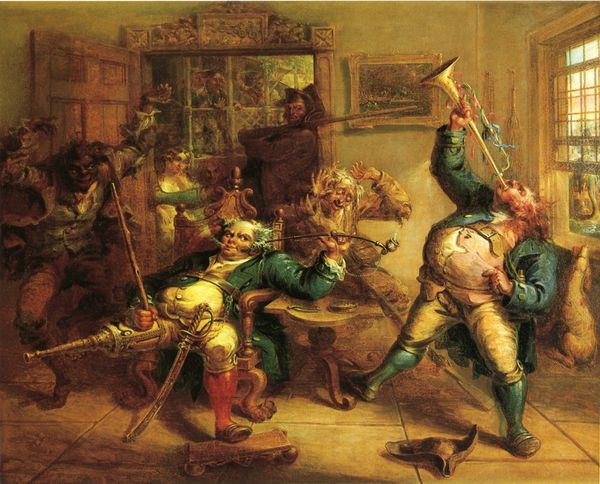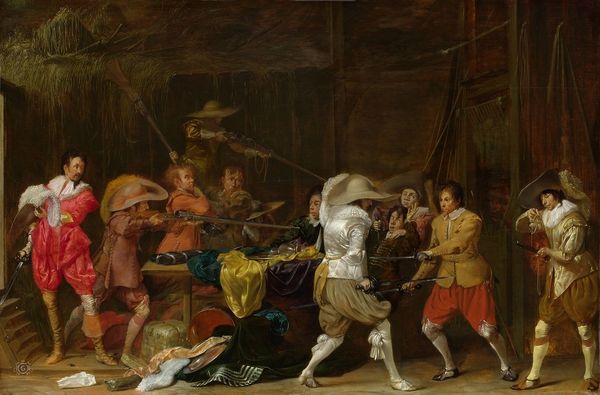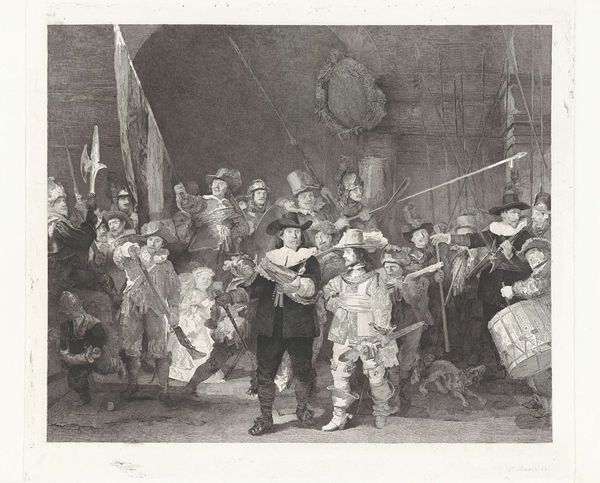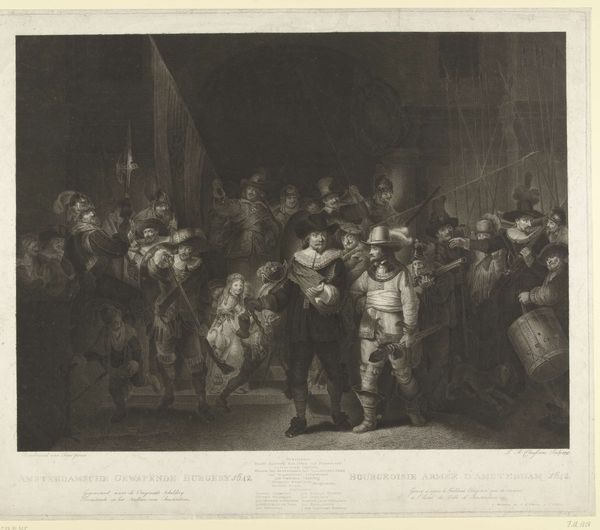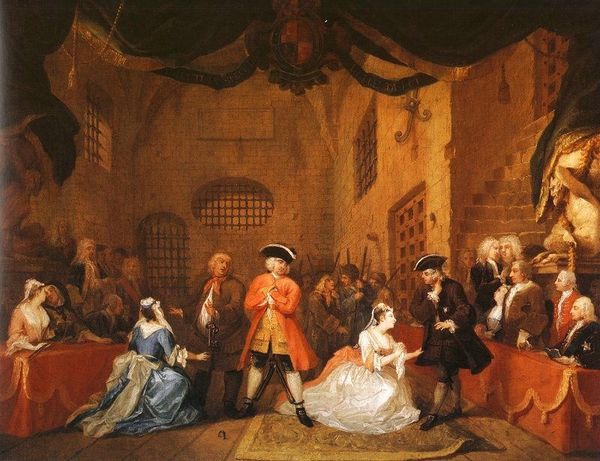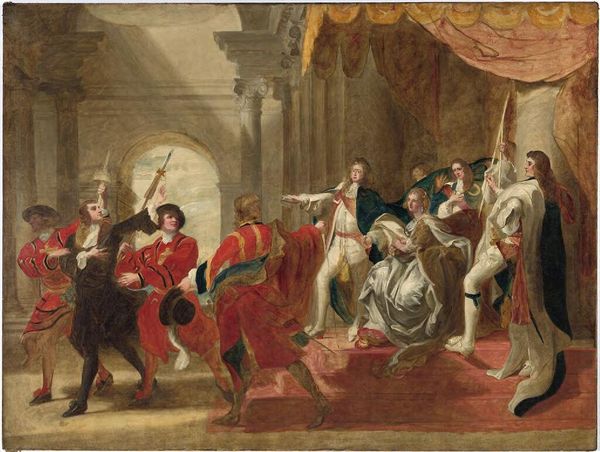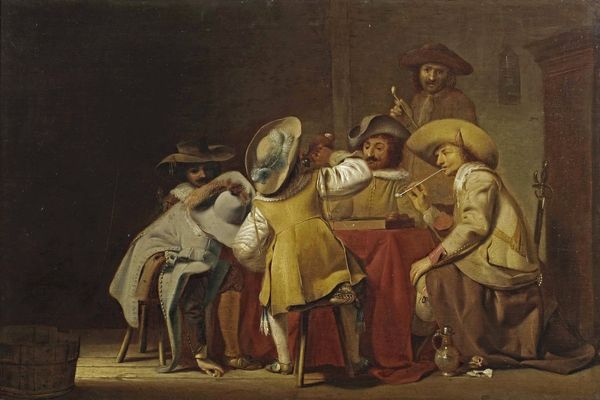
Night Watch, Militia Company of District II under the Command of Captain Frans Banninck Cocq 1642
0:00
0:00
painting, oil-paint
#
figurative
#
baroque
#
dutch-golden-age
#
painting
#
oil-paint
#
painted
#
figuration
#
oil painting
#
underpainting
#
group-portraits
#
chiaroscuro
#
history-painting
#
mixed media
Copyright: Public Domain: Artvee
This huge oil painting, often called ‘The Night Watch’, was painted by the Dutch artist Rembrandt (1606-1669) in 1642. It is perhaps the most iconic image from the Dutch Golden Age, the name given to the period in which the Netherlands rose to immense power. The Dutch Golden Age stretched across the entire seventeenth century; its art was dominated by the dramatic styles of the Baroque. The actual title of this work is ‘Militia Company of District II under the Command of Captain Frans Banninck Cocq’. That’s quite the mouthful! Despite its popular name, the painting does not depict a night scene. The dark and gloomy colour palette is the result of a thick varnish coating, which has darkened as it aged. Since 2019, the painting has undergone restoration to return it to its original vibrancy… but could the varnish have been a blessing in disguise? 👇 ‘The Night Watch’ is a group portrait, depicting 34 separate figures. All are real members of the Civil Guard of Amsterdam, a group of volunteers who defended the city. Each figure paid Rembrandt 100 guilders (gold pennies) to be featured in this work. That adds up to a hugely expensive commission! 💰 The figures in this painting are unevenly lit. The most important people are illuminated, while others are cast in shadow. This contrast between light and dark is dramatic and striking – it’s a prime example of Baroque ‘tenebrism’ (dramatic illumination). Every figure has an individual expression and accurately detailed facial features. They are not neatly arranged, but rather shown in a crowd of bodies and faces. This dynamic composition was unconventional for group portraits at the time that Rembrandt was working. At the centre of the composition, standing ahead of the overlapping crowd, is Frans Banninck Cocq. Cocq was a knight who captained the Amsterdam guard. He is dressed in black with an elaborate white collar and a red sash to symbolise his status. To the right of the captain is Willem van Ruytenburch, a wealthy junior officer. The pale yellow tones of his clothing provides an effective contrast to the darkness of Cocq’s outfit. This iconic painting has been the target for various attacks and instances of vandalism throughout the previous century. In both 1911 and 1975, ‘The Night Watch’ was slashed with a knife! Both attacks damaged only the thick layer of varnish, meaning the painting could be quickly restored. The work was also protected by its varnish in 1990, when it was sprayed with a corrosive acid. The tumultuous existence of the painting definitely reflects its dramatic Baroque style! 🎭 Editor: Lucy Jude Grantham
Comments
Join the conversation
Join millions of artists and users on Artera today and experience the ultimate creative platform.
artera almost 2 years ago
⋮
The Night Watch, originally known as The Company of Frans Banning Coca and Willem van Ruytenburch (the painting's famous title was erroneously given to it due to its thick, dark yellow varnish), is ostensibly a genre scene out of the seventeenth-century Dutch Baroque. Painted in 1642, at the height of Rembrandt van Rijns (1606-69) career, the colossal painting is a commissioned group portrait of a militia company. Such portraits traditionally depicted their members in neat rows or at a banquet. Rembrandt's version, however, makes the prosaic subject into a dynamic work of art; with its masterful chiaroscuro and dramatic action, the conventions of traditional Portraiture are overturned.
